Service History
The wooden three masted schooner
Lucerne was large and probably named after the city in Switzerland. The vessel was built at a cost of $55,000 by Parsons & Humble shipbuilders and launched on April 23, 1873 at Tonawanda, New York. In 1874 the vessel was valued at $50,000 and rated A1 by the Board Of Lake Underwriters. At the time of loss, the vessel and cargo was valued at $33,000. The official registry number was 15914. The
Lucerne hauled grain such as corn, but later also carried coal and iron ore. The
Lucerne was bought and sold numerous times during its career and had a few problems over that time including the events listed below:
September, 1875: Collided with the schooner
Adams near Chicago.
August, 1877: The mizzen boom was broken outside of Chicago while laden with corn for Buffalo.
1881: Repaired.
1885: Received a new deck and hatch combings. The value was raised to $26,000 and classed A2.
1885: Was in the grain trade between Duluth and Buffalo.
1885: Struck by lightning shattering the mizzen top mast.
At the time that the
Lucerne sank, it was considered to be a very sturdy vessel. It had been completely outfitted with new fittings and sails by the new owners in order to withstand the heavy duty service on Lake Superior.
Final Voyage
Late Monday evening, November 15, 1886, the schooner
Lucerne, with Capt. George S. Lloyd as master, and loaded with iron ore, cleared Ashland for Cleveland. The intention was to meet the tow,
Raleigh, at Sault Ste. Marie. This was to be the last run of the season, but was the last voyage ever for the large schooner
Lucerne.
The vessel started out with a fair wind, but was not seen again until Tuesday afternoon in the midst of a storm. The Captain of the steam barge
Fred Kelly en route for Ashland to load iron ore, discerned the ill fated schooner rolling and pitching about off of Ontonagon with all sails set except the gaff topsail, evidently at the mercy of the wind and waves. At about dark, the
Lucerne was seen by the mate of the
Kelly, to turn about and head for the safety of Chequamegen Bay, but was never seen again. On the morning of November 19th, the LaPointe lightkeeper discovered the wreck in seventeen feet of water off the beach of Long Island. In the afternoon, searchers in the tug
S.B. Barker and
Cyclone of Bayfield also discovered the spars of a vessel just above the water, which proved to be the missing
Lucerne. In the rigging were found three of the crew who were covered with ice from one to six inches thick. They were cut loose and taken to Bayfield. The vessel had grounded on either the 17th or 18th of November, 1886.
The following January, the wreck was purchased by Sol. Boutin, Sr. who warned that parties were forbidden from removing items from the wreck. The wreck was revisited in June of 1887 by a salvage crew who initially determined the wreck could be re-floated and put back in service. Actually, only a few items were salvaged including the two ton anchor and eighty fathoms of chain.
In the late 1970s more salvage was conducted in the form of an amateur archeological excavation. Artifacts were taken to the Canal Park Museum in Duluth, and later to the Apostle Islands National Lakeshore collection and to the Meteor Museum in Superior.
Today
The hull of the schooner
Lucerne is remarkably intact with the bow and starboard midships preserved up to the deck level. The hull lies in 24 feet of water with substantial portions settled into the sand bottom. The top of the stern and stern posts are 15 feet beneath the surface of the water and the top of the centerboard is at 12.5 feet. A portion of the forecastle is intact; the stern is intact to the top of the stern post and transom--missing are spars, rudder and steering gear. Midship: the port side frame tops are partially buried by iron ore; the centerboard trunk survives upright. The deck is largely missing. The upper deck level on the starboard side is marked by a shelf/row of hanging knees. A large number of dead trees and stumps are entangled about the deck. There are sizable port side fragments.
The wreck of the
Lucerne is buoyed annually. Outstanding features to see besides the intact hull are: the centerboard trunk, capstan, windlass, samson post and railings all surrounded by the cargo of iron ore.
A dive guide for this vessel is available for purchase.


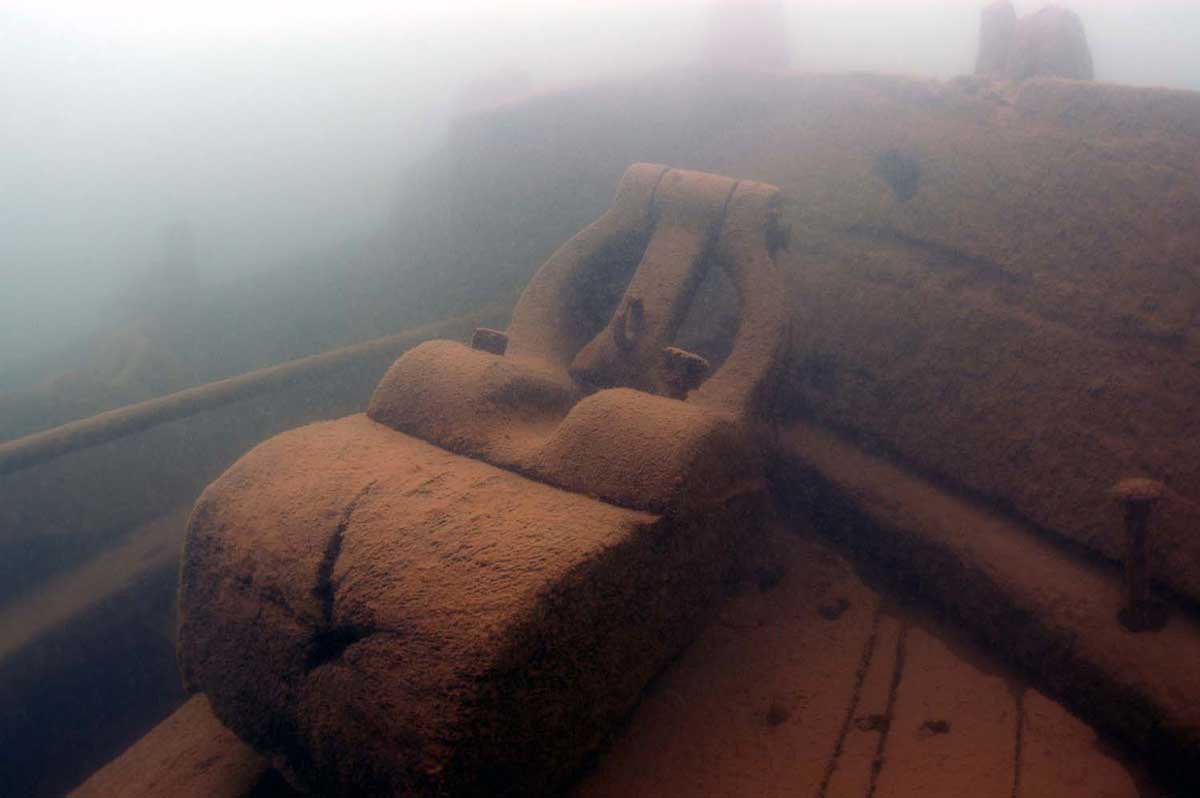
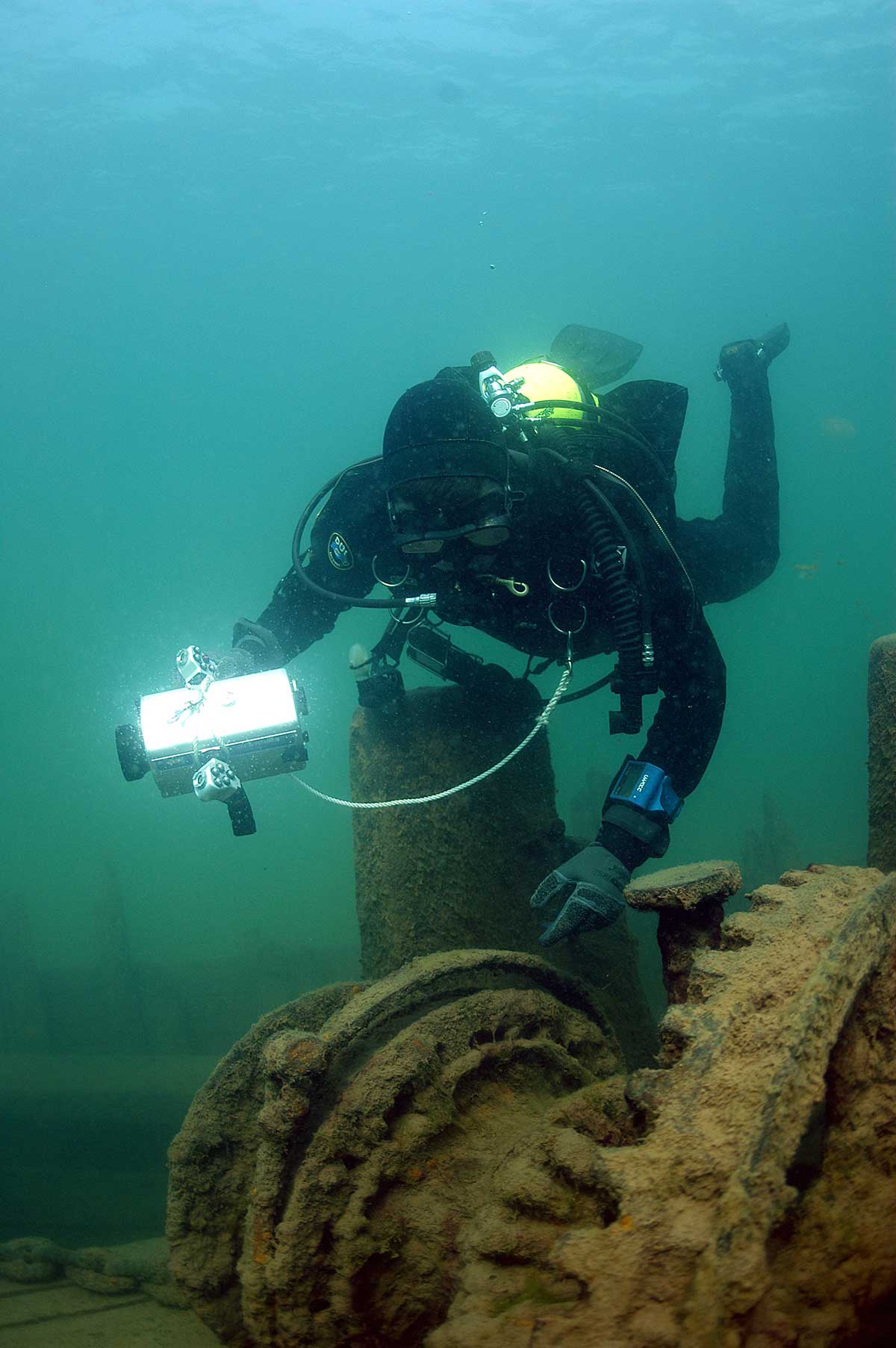
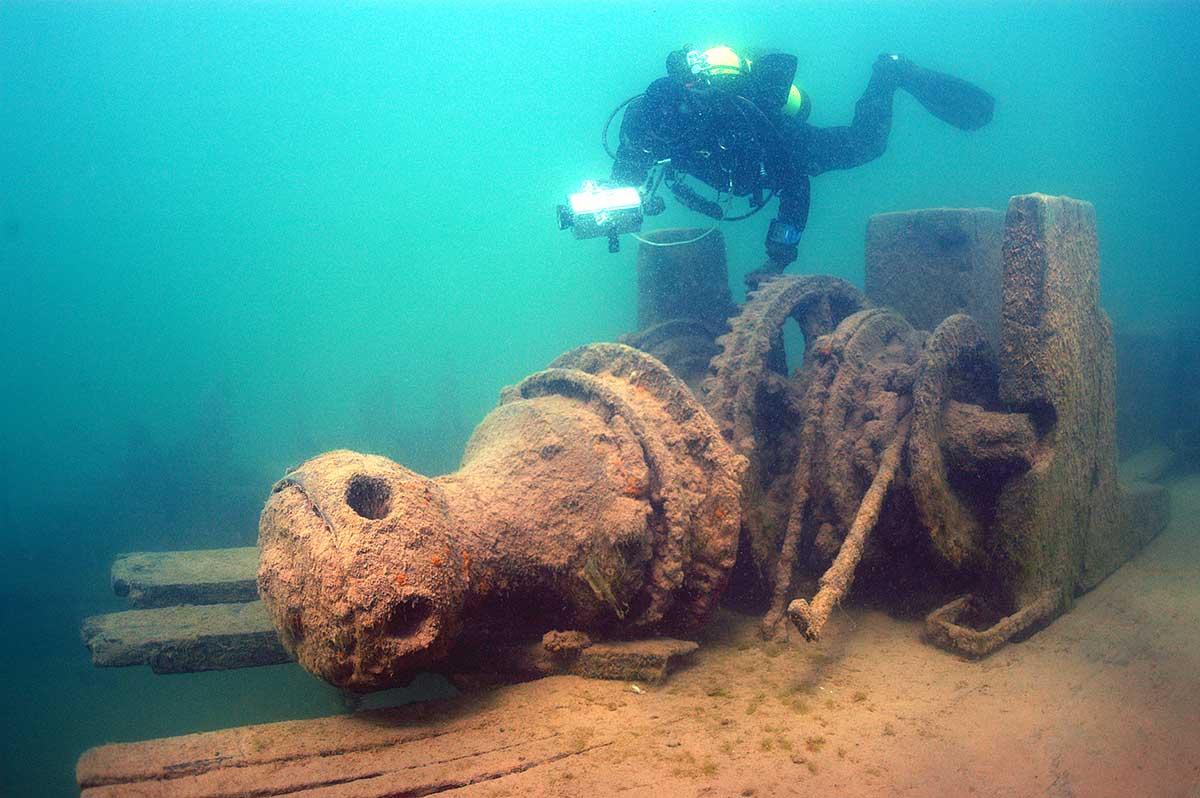
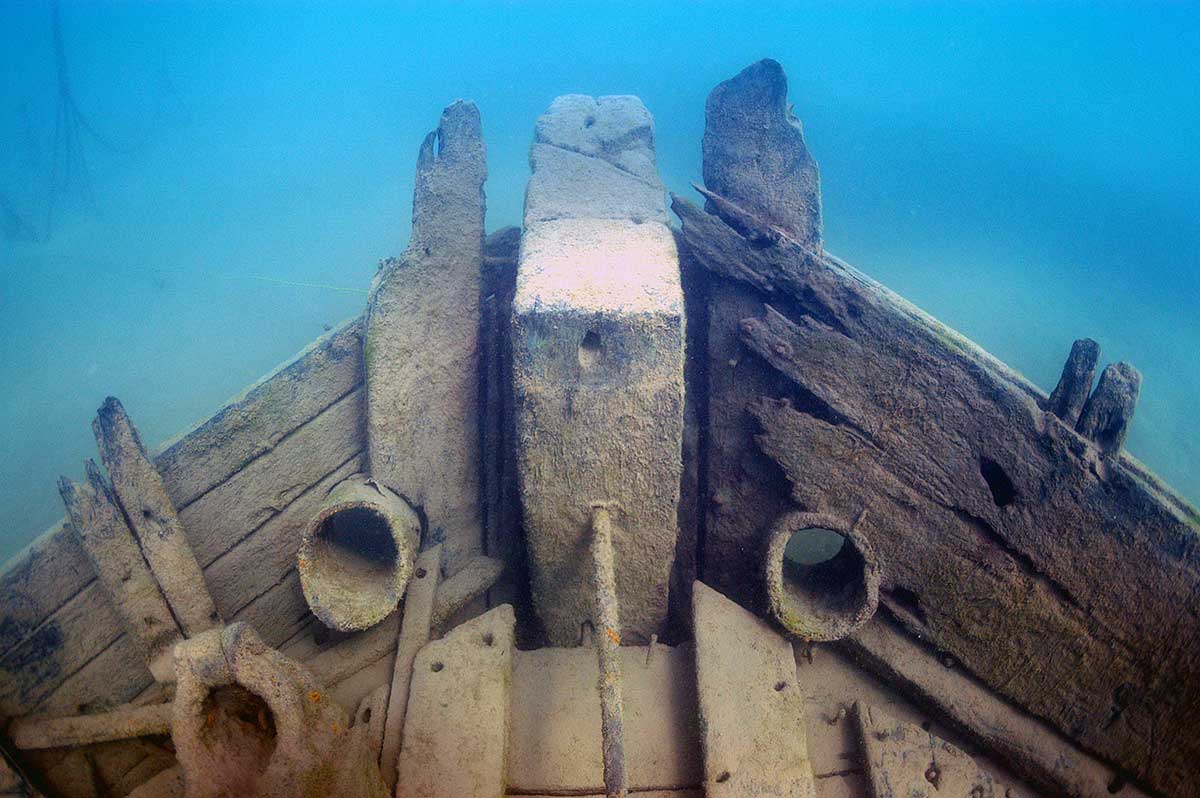
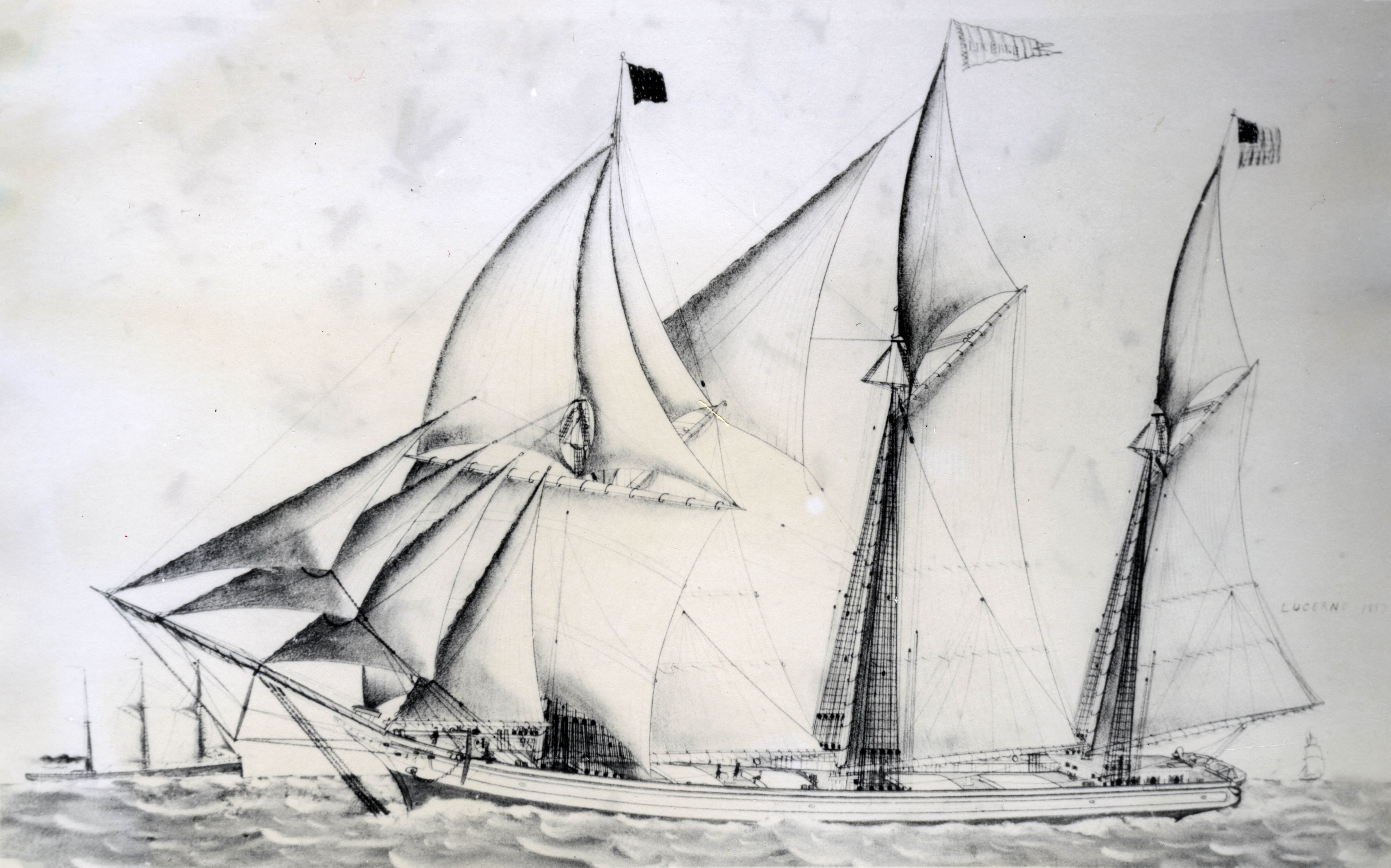
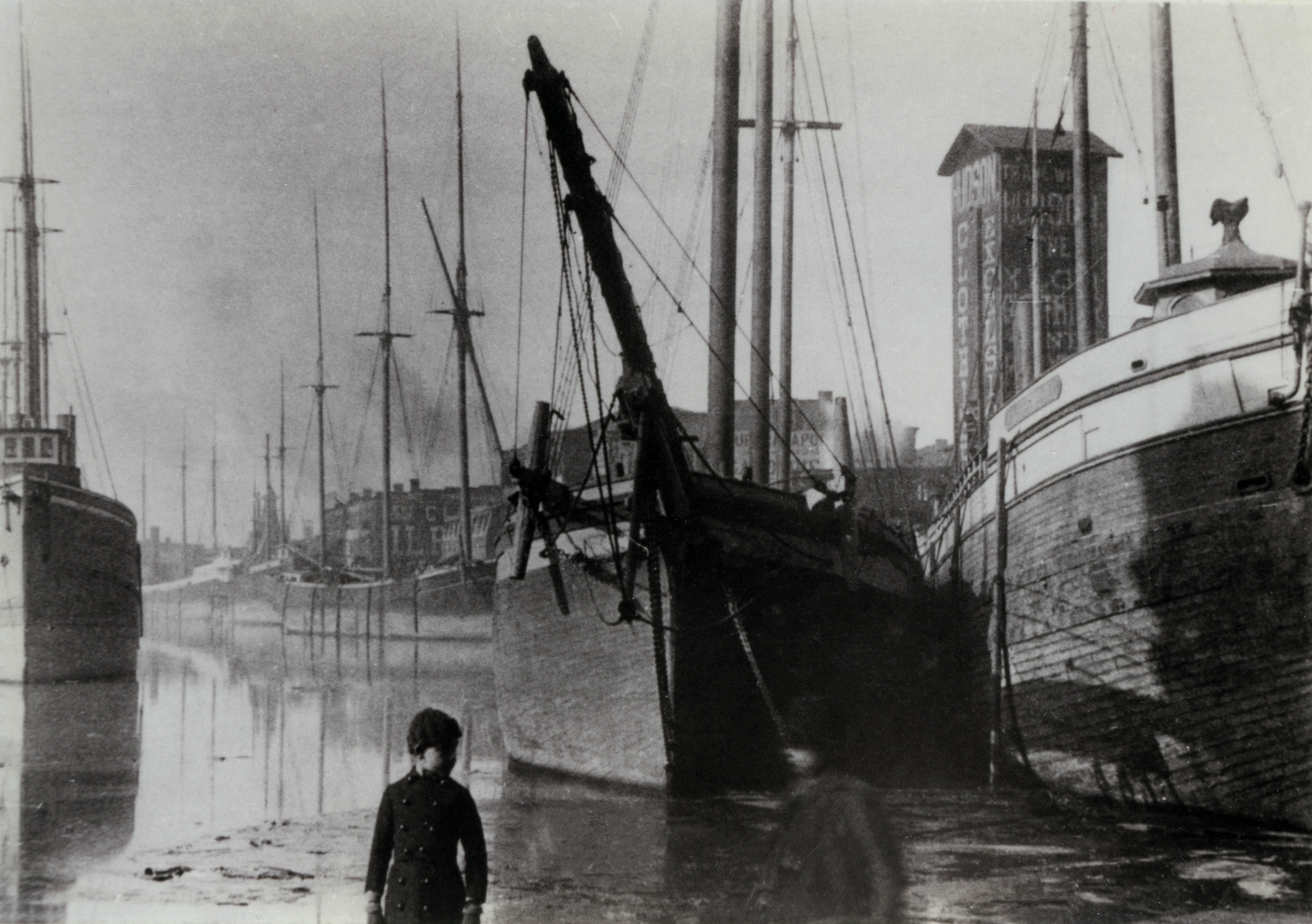
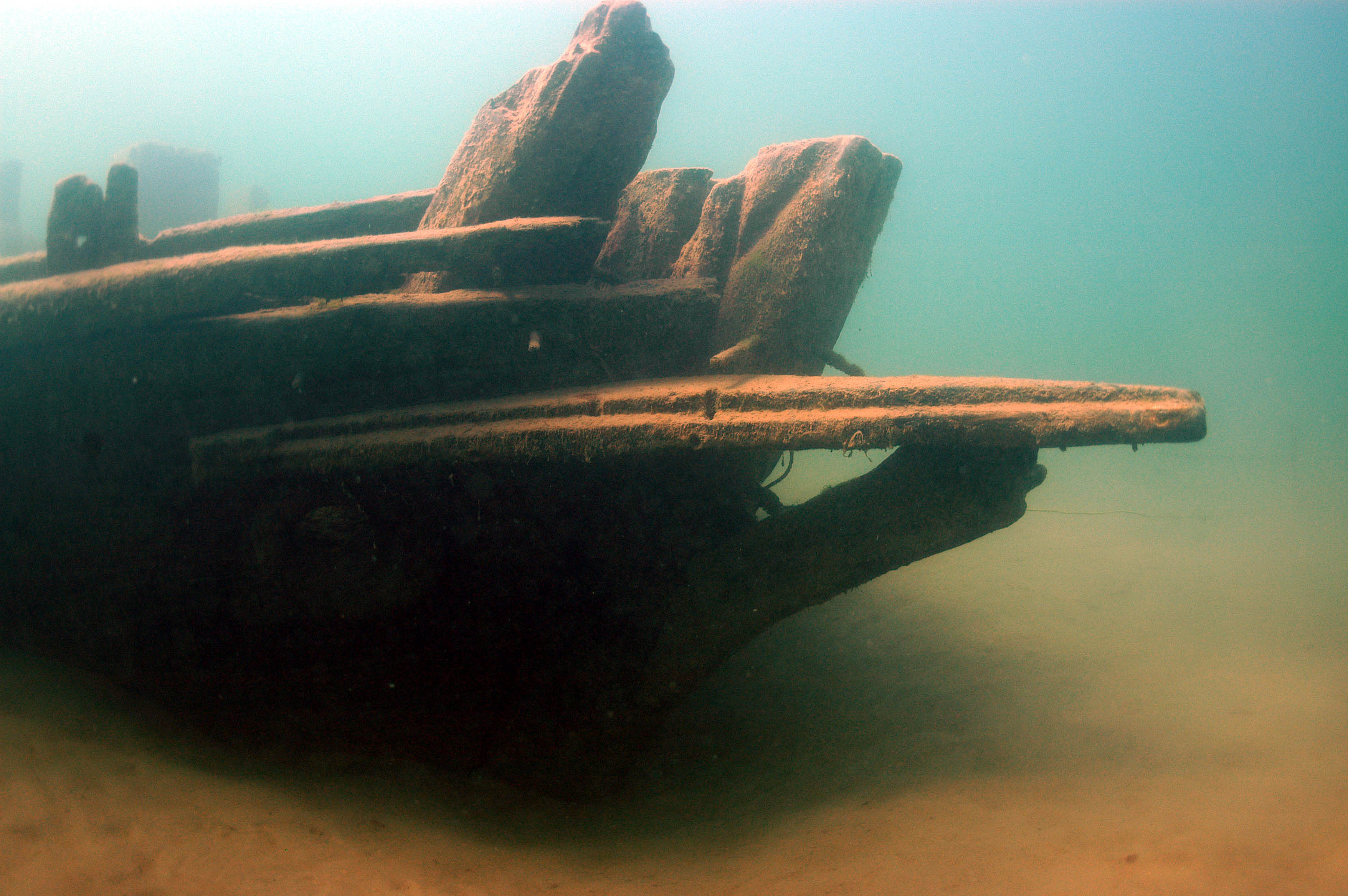
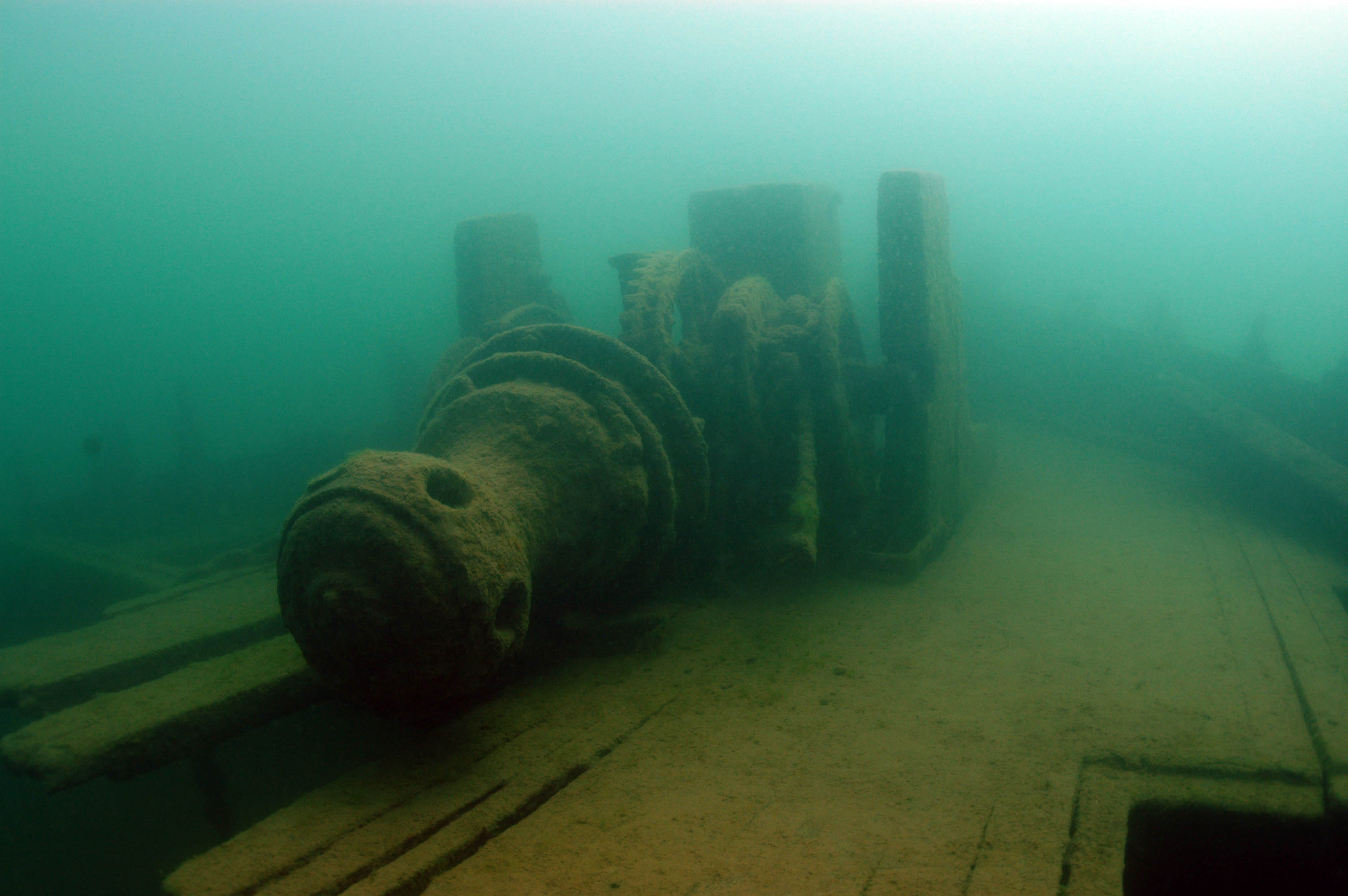

 Confirmed Location
Confirmed Location
 Unconfirmed location
Unconfirmed location